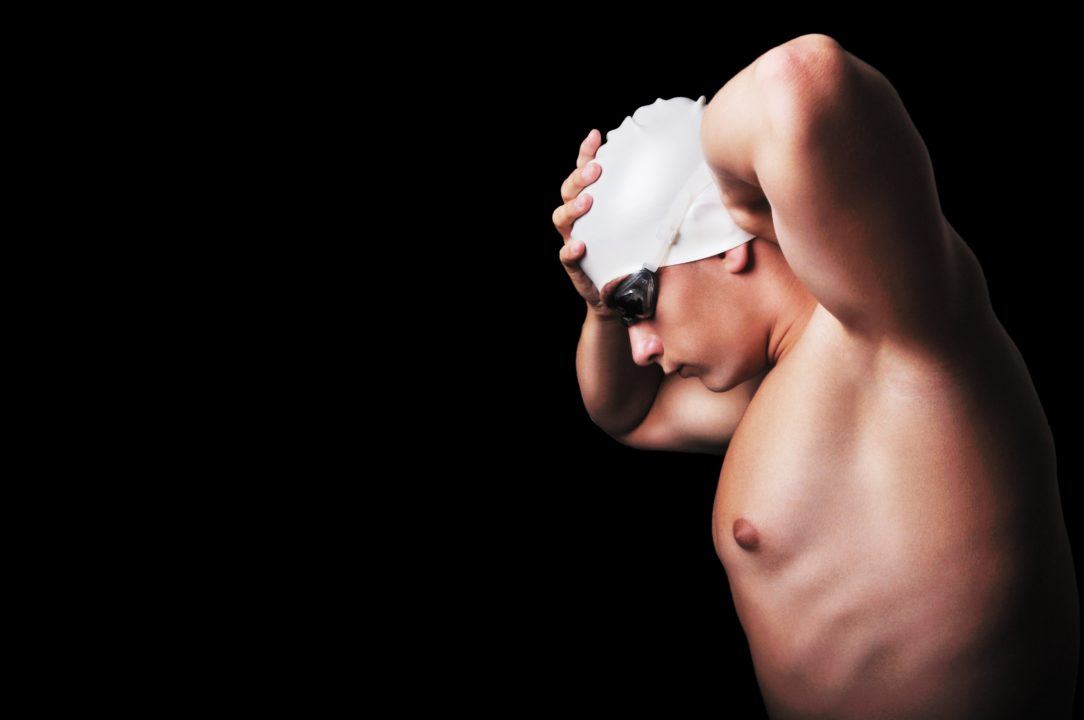Courtesy of Gary Hall Sr., 10-time World Record Holder, 3-time Olympian, 1976 Olympic Games US Flagbearer and The Race Club co-founder.
To compete in swimming at your very best, every possible effort should be made to reduce frontal drag during your race. With boats, it is a well-known fact that the shape of the hull at the front end of the boat has a significant influence on its frontal drag forces. For swimmers, the front end is primarily the head, which is large and roundish; a non-streamlined shape. Anything we can do to reduce frontal drag from the head will be beneficial to the swimmer’s speed.
For a swimmer, the position of the head in the water is crucial. The protruding head sets up the bow wave. The more the head protrudes above the water and the faster the swimmer, the larger the bow wave and the greater the concomitant surface drag.
We have spoken a lot about the importance of head position technique in swimming in all four strokes. Getting the head underwater at the fastest points in the stroke cycle helps to reduce frontal drag. According to one study at the University at Buffalo, surface or wave drag accounts for around 25% of the total drag at race speed. With the head underwater, the second component of frontal drag, friction, will increase compared to being partly in the air. According to the same study, friction (from the entire body) also contributes around 25% of the total frontal drag at race speeds, so a reduction of a swimmer’s friction, wherever possible, is desirable.
Wearing a swim cap is one technique for reducing friction. I have often wondered if the type of swim cap being worn makes a difference. There are swim caps made of latex, silicone and most recently, a thicker silicone material, called dome caps. The thicker dome caps tend to be smoother on the head, while the latex and thinner silicone caps tend to wrinkle on the head. Recently, using our Propulsion/Drag Meter technology (AP labs Italy) in Islamorada, Florida we were able to compare the passive frontal drag forces caused by wearing two different types of swim caps.
For 50 meters I was pulled underwater at a relatively constant and average speed of 2.22 m/sec in a passive (fixed) streamline position wearing a cap, training suit, and goggles. That is pretty close to world record speed for the men’s 50-meter freestyle event. I wore a thinner silicone cap (Race Club) for the first test and a thick silicone racing cap (Hammer Head) for the second test. In just under ten seconds, nearly 200 frontal-drag force and velocity measurements were acquired during each test. When adjusted for the identical speeds (speed influences the drag force), the average frontal drag force, while wearing the thinner silicone cap, was 226.77 Newtons. With the dome racing cap, the average frontal drag force was 202.89 Newtons. That represents a 10.5% reduction in frontal drag by wearing the dome racing cap.
I expected to find a difference but was surprised to find how much of a difference the swim cap makes in reducing frontal drag. Given the high speed of the test and considering that the head was underwater for the entire duration, a swimmer cannot expect to reduce the average drag force in his swimming races by 10.5% by wearing a dome cap.
However, in a sport where races are often won or lost by hundredths of a second, any drag reduction that can be achieved legally is a good thing. For your fastest racing, I recommend using the thicker dome caps.
Yours in swimming,
Gary Sr.

Gary Hall, Sr., Technical Director and Head Coach of The Race Club (courtesy of TRC)
Like The Race Club on Facebook
Follow The Race Club on Instagram
Follow The Race Club on Twitter
Connect to The Race Club / Gary Hall Sr. on Linkedin
THE RACE CLUB
Because Life is Worth Swimming, our mission is to promote swimming through sport, lifelong enjoyment, and good health benefits. Our objective is for each member of and each participant in The Race Club to improve his or her swimming performances, health, and self-esteem through our educational programs, services and creativity. We strive to help each member of The Race Club overcome challenges and reach his or her individual life goals.
The Race Club provides facilities, coaching, training, technical instruction, video, fitness and health programs for swimmers of all ages and abilities. Race Club swim camps are designed and tailored to satisfy each swimmer’s needs, whether one is trying to reach the Olympic Games or simply improve one’s fitness. Our programs are suitable for beginner swimmers, pleasure swimmers, fitness swimmers, USA swimming or YMCA swimmers, or triathletes; anyone who wants to improve swimming skills. All of our Race Club members share an enjoyment of being in the water and use swimming to stimulate a more active mind and body.

